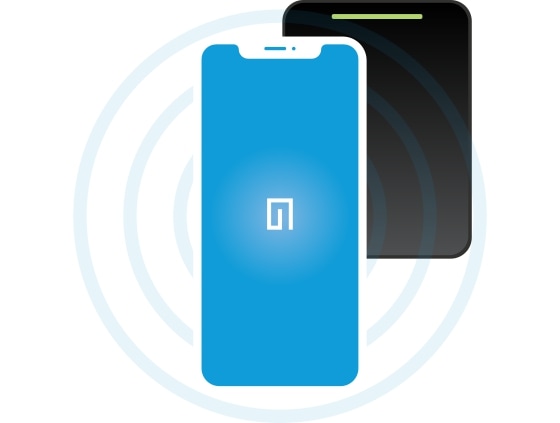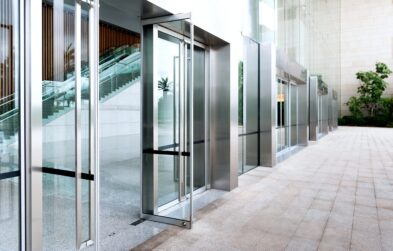Did you know that a new burglary occurs nearly every 12 seconds in the United States? Burglaries are so rampant, in fact, they lead to a loss of $3.4 billion in personal and property loss, annually.
A majority of these break-ins take place after businesses have closed for the day, leaving security systems to deter unwanted visitors and crimes. Fortunately, video management can be used to capture security events and incidents.
What is a Video Management System (VMS)?
So, what exactly is a video management system?
A video management system (VMS) is a software program that allows you to capture, record, and analyze any footage or video content from your security cameras. Integrating a VMS with your current surveillance solution allows you to view important footage from afar in real-time, while also keeping recorded videos organized in the event of an audit.
Key mechanisms and other activities associated with video security management include:
- Video surveillance systems
- Motion detection technologies
- License plate recognition features
- Camera systems
- Automatic playback features
- Cloud-based data storage
- Mobile apps for remote viewing functionality
- Video analytics software
- Cloud-based access control platforms
In this article, we will walk you through how to choose a VMS and discuss important ways they integrate with access control systems to provide the ultimate, robust surveillance solution.
How a VMS Improves and Enhances Access Control Systems
In recent years, both VMS and access control systems have benefited exponentially from cloud-based technologies.
Prior to the cloud, VMS and access control systems were housed in on-premises servers that made scaling and integrating difficult to do. Businesses would run into issues with bandwidth, video file management/storage, and more. However, the novel flexibility of the cloud has allowed SaaS providers to now engineer these systems in complementary ways.
When VMS and access control systems are integrated, they offer the combined strength of two high-performance security technologies. As such, both platforms greatly improve security and safety at your operation. They work together to fortify your all-around defenses.
In the event of an audit or security breach, VMS and access control systems work together to track foot traffic within your building. A/V evidence offers robust metadata for complete audit trails within your video platform. When combined, cloud-based VMS and access control systems offer detailed remote monitoring from anywhere in the world.

Integrating With the Right VMS: Tips & What to Look For
Choosing the right VMS to integrate with access control can be challenging. With today’s ever-evolving technology and widgets, it can be an overwhelming task to find and deploy the best VMS. To help you, we’ve listed a few essential tips and key features to look for below.
- Determine the level of security you need
- Identify your high-security areas
- Native integrations vs. third-party integrations
- Automatic updates
- Remote troubleshooting
- Enterprise-level integrations and scalability
Determine the level of security you need
First, you must determine the level of security your operation needs. Security needs are not one-size-fits-all. Depending on the nature of your business, conduct a thorough risk assessment to determine what level of security you need. For example, a healthcare center in a major metropolitan city may need different VMSs in place than a restaurant in a rural area.
By assessing risk and researching compliance standards for your given industry, you can start to hone the appropriate VMS for your operation.
Identify your high-security areas
Now that you’ve determined the level of security you need, you must also identify the actual locations or areas that require that security. Every operation has areas of their building that need more security coverage than others. For example, a server room at a retail outlet will likely have far greater security controls than a storage room.
By understanding which specific areas of your business require greater video surveillance and protection, you can further align your needs with a VMS provider. In the end, greater security needs require more robust and scalable VMS platforms.
Native integrations vs. third-party integrations
Another aspect to consider when choosing the right VMS are native integrations and third-party integrations. Native integrations refer to VMS and access control systems built to be compatible with one another from the start. Genea offers native integrations with VMS providers such as Cisco Meraki.
Third-party VMS and access control integrations can only be combined via additional coding work. If you already have an access control system, finding a VMS provider with native integrations will save you time and expenses.
Automatic updates
Cloud-based VMS software gets automatically updated according to the protocols of your SaaS provider. Conversely, on-premises VMS systems must be manually updated by your internal IT team, taking time and resources. All things considered, a cloud-based VMS is more affordable and convenient for everyone involved.
Remote troubleshooting
Remote troubleshooting can only take place with a cloud-based VMS. As seen with automatic updates, on-premises VMSs require a dedicated IT team for troubleshooting. Again, the convenience and affordability of cloud-based VMSs makes it a better choice for nearly any operation with a large tech stack.
Enterprise-level integrations and scalability
A final consideration to make when choosing the right VMS has to do with your business’s size and future growth plans. Importantly, enterprise-level businesses have security needs that can only be matched by enterprise-level VMS and access control providers.
If you are planning to scale your business in the future, make sure your VMS system can function in different states and countries. Further, you should confirm that the VMS provider offers multi-location compatibility and remote tech support. As you scale your business, you don’t want to find your VMS capabilities limited.
Most Valuable Features of an Access Control System
If you are unsure of which access control system best fits your VMS needs, there are some important criteria you can weigh in the decision-making process.
The most robust, scalable, and affordable access control systems on the market today are cloud-based. Partnering with a SaaS provider like Genea is a great way to get access control up and running at your operation. Cloud-based access control systems also feature seamless scalability and integrations.

Further, administrators can view and manage modern access control systems completely off-site. With a centralized global dashboard, you can assess your security system and make necessary adjustments whenever needed, wherever you are. In short, you want to ensure the access control system you choose features the following:
- A complete cloud-based system
- Seamless scalability
- Plenty of integrations available
- Viewed and managed off-site/remotely capabilities
- A centralized, easy-to-use dashboard for audits and monitoring
Learn More About Genea Security System
Regardless of your industry, physical security is important for protecting the safety of your employees and the success of your business. Video management software is a critical security solution for both surveillance tasks and overall physical safety.
VMS and access control integrations give you a robust tech stack that can be trusted in even the most highly regulated industries (such as finance and healthcare). When you combine Genea’s access control platform with the right VMS, you can conduct countless tasks from afar, including video monitoring and analysis.
Genea’s access control software offers a blend of security and convenience and is the perfect complement to your video management solution. Contact us today to learn more!



